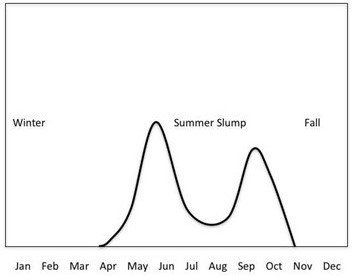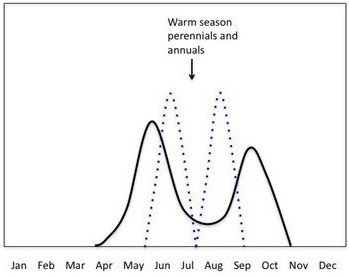By Justin Brackenrich and Sjoerd Willem Duiker
Winter feeding can be damaging on fields and animals. Strategies exist to help reduce this damage, but you need to start planning now.
During winter feeding, rain and snow are not friends to pastures. Added the typical 30s at night and 40s in the day, and you can quickly have a big mess on your hands. When your plan is to feed in a winter feed area or sacrifice lot, it is less of a concern. In those scenarios, you are prepared for the next step in the process, renovation. If you feed bales outdoors in your pastures, mother nature and livestock can quickly leave your pastures battered and in need of repairs before next season. What can you do to avoid some of this damage? Some things take months of pre-planning and may be an option for next year, while others can be done on the fly and should be considered for this season. This article will outline some options and provide you with more resources.
Planning for Winter with Species Diversity
Pasture species diversification is a great way to supplement winter forage supply while opening some new options to avoid destroying your pastures. Species diversification doesn’t have to be complicated or scary, it can be as simple as adding some tall fescue to a field for stockpiling. Stockpiling is a practice that involves resting pastures from the end of summer until they are grazed in the winter. Species that work well for stockpiling include tall fescue, bromegrass, timothy and birdsfoot trefoil. Stockpiling typically involves strip or rotational paddock grazing for short durations from November onwards. For more information on stockpile grazing, read Extending the Grazing Season- Stockpiling Pasture for Fall Grazing . Even as this practice grows in popularity, some producers still seem to be on the fence about fescue. We believe there is a place for tall fescue in a grazing system (even for the notorious ‘Kentucky 31’). Tall fescue is productive, has a very tough root system, and withstands more abuse than most other pasture species. Additionally, the alkaloid content of tall fescue that causes health problems in grazing animals declines in the winter. Therefore, tall fescue is a great resource for stockpiling. The article Tall Fescue, Friend or Foe? written by University of Maryland and Penn State agronomists goes into more detail.
Other ways we can use species diversification is by interseeding warm-season grasses or legumes into our pastures for summer feeding. It isn’t often considered, but one way to extend the grazing season is to increase your grazing options during the grazing season- warm-seasons do that. A figure, figure 1, from Extending the Grazing Season with Plant Diversity , shows the benefit of adding these warm-season plants. The solid line represents the growing pattern of the cool-season plants. Typically, there would be a farm wide lull in production during the hottest part of the year, known as the summer slump.

Figure 1: Illustrates the “summer Slump” in cool-season grasses.
However, we can start to beat this summer slump with the addition of warm-season grasses, Figure 2. These grasses thrive in the hottest part of the summer and help this void. Not only does this allow us to save our cool-season grasses during the summer, but that frees up cool-season grasses for stockpiling for later season grazing.

Figure 2: The “Summer Slump” production loss is backfilled with the addition if warm-season annual and perennial grasses.
What Can We Do Now?
If you are noticing your pastures are beginning to show signs of distress and wear, you need to start making decisions. Can you move hay and livestock more often? Can a temporary winterfeeding area be established as a sacrifice area to save the rest of the pastures?
When feeding outdoors, it will always result in some form of damage, but this will be reduced when the ground is frozen, and the livestock are moved frequently. Some farmers will start moving livestock several times a day when they see increased pugging of the soil. To discourage congregation of livestock, try taking minerals to different locations than water and hay. If hay is rolled out or fed in frequently changing locations, this will also help with manure and nutrient distribution for more fertile and productive pastures in the spring. For more information on how to reduce damage to your pasture, read Reducing Pasture Damage During Winter Feeding.
If you already have a sacrifice area or are thinking about setting one up for the winter, maintaining that area is important. These areas can get inundated with mud and animal waste in a hurry if they are not properly cared for. Placement is very important for these areas. One thing to consider is your location of livestock water and feed. Another consideration is your ease of access, and a final consideration is how wet the land lays. Since livestock will be congregating here, it is important to keep away from streams, which could become contaminated. For more information on sacrifice areas and winter feeding, read Care and Condition of Sacrifice Areas . If you have the opportunity, constructing a covered structure with concrete floor where livestock can be kept when it is too wet outside is a great way to avoid pasture damage.
Wrapping Up
When winter and winter time decisions are upon us, our window for planting or species diversification is closed. That does not mean we are out of options. This article provides tips and resources for helping to make the tough decisions during the winter months. If you need more assistance, contact your local Penn State Extension Agronomy Educator.
Acknowledgement
This work was supported by the USDA National Institute of Food and Agriculture and McIntire-Stennis Appropriations under Project #PEN04600 Accession No. 1009362 and by The National Fish and Wildlife Foundation under a subcontract from Capital RC&D.
Source : psu.edu